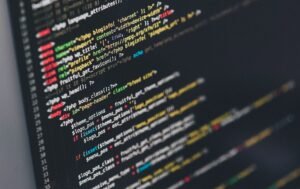AI Workflow Nvidia
Artificial Intelligence (AI) workflows have become increasingly essential for businesses to optimize processes and make data-driven decisions. NVIDIA, a prominent technology company, has been at the forefront of developing AI solutions and platforms. In this article, we will delve into the AI workflow offered by NVIDIA, exploring its key features, benefits, and applications.
Key Takeaways:
- NVIDIA offers an efficient AI workflow solution for businesses.
- The AI workflow by NVIDIA simplifies data preprocessing, model training, and deployment.
- It provides a comprehensive set of tools and frameworks for building AI models.
- NVIDIA’s AI workflow is widely used across various industries, including healthcare, finance, and transportation.
NVIDIA’s AI workflow incorporates a series of stages that streamline the development and deployment of AI models. It starts with data preprocessing, where raw data is cleaned, transformed, and prepared for analysis. From there, the model training phase involves using algorithms and large datasets to train the AI model. Finally, the deployment stage enables the model to be used in real-world scenarios.
With NVIDIA’s AI workflow, businesses can leverage high-performance computing capabilities to drive innovation and gain a competitive edge.
Data Preprocessing
Data preprocessing is a critical step in the AI workflow, as it ensures the data is in a suitable format for analysis. NVIDIA provides powerful tools and libraries, such as RAPIDS, which accelerate data pre-processing tasks using GPUs. This significantly reduces the time taken to clean and transform data, enabling faster model development and deployment.
NVIDIA’s RAPIDS library allows businesses to process large datasets efficiently, enhancing productivity and scalability.
Model Training
Model training is a resource-intensive process that requires significant computing power. NVIDIA’s GPU-accelerated platforms, such as the NVIDIA DGX Station, provide an ideal environment for training complex AI models. These platforms deliver exceptional performance and speed up the training process, allowing businesses to iterate and refine their models more rapidly.
NVIDIA’s GPU-accelerated platforms enable businesses to train AI models faster than traditional computing methods, reducing time-to-insight.
Deployment
Once the AI model is trained, it needs to be deployed and integrated into existing systems or applications. NVIDIA’s deployment solutions, like the NVIDIA Triton Inference Server, facilitate seamless integration and efficient inferencing of AI models at scale. This enables businesses to deploy their AI models in production environments, delivering real-time insights and enhancing decision-making processes.
NVIDIA’s Triton Inference Server simplifies the deployment and scaling of AI models, ensuring smooth integration with existing infrastructure.
Applications in Various Industries
The versatility of NVIDIA’s AI workflow makes it applicable across a wide range of industries. Here are a few examples:
| Industry | Use Case |
|---|---|
| Healthcare | AI-powered medical image analysis for diagnosis and treatment planning |
| Finance | Algorithmic trading systems using AI for predictive analytics |
| Transportation | Autonomous vehicles with AI for navigation and object detection |
NVIDIA’s AI workflow is adaptable to diverse industry verticals, fostering innovation and transformation across sectors.
Benefits of NVIDIA’s AI Workflow
NVIDIA’s AI workflow offers several benefits to businesses seeking to leverage AI in their operations:
- Accelerated data preprocessing, model training, and deployment processes improve overall efficiency.
- Integrated tools and frameworks simplify the development and deployment of AI models.
- High-performance computing capabilities enable faster insights and enhanced decision-making.
Conclusion
NVIDIA’s AI workflow provides businesses with a comprehensive solution to streamline the development, training, and deployment of AI models. With its powerful tools and platforms, businesses can leverage AI to drive innovation, improve decision-making, and gain a competitive edge in the market. Whether it is in healthcare, finance, transportation, or other industries, NVIDIA’s AI workflow empowers organizations to harness the power of artificial intelligence for their specific needs.

Common Misconceptions
Misconception 1: AI can replace human workers
- AI technology is designed to complement human efforts, not to replace humans.
- AI systems require human oversight and intervention to ensure accurate results.
- AI is most effective when it augments human capabilities, enabling workers to focus on higher-level tasks.
Misconception 2: AI is infallible and always produces accurate results
- AI systems are not perfect and can sometimes produce incorrect or biased results.
- Accuracy of AI algorithms depends on the quality and quantity of the data they are trained on.
- Human involvement is necessary for validating and correcting AI-generated outcomes.
Misconception 3: AI workflow is a fully automated process
- AI workflow involves a combination of automated processes and human intervention.
- Human experts are required to curate data, train AI models, and interpret the results generated by the AI system.
- AI workflow may involve iterative improvements and adjustments based on human feedback and insights.
Misconception 4: AI can solve any problem we throw at it
- AI is suited for specific tasks and domains and may not be effective in all problem-solving scenarios.
- AI systems require careful training and configuration to perform optimally in particular contexts.
- Some problems may require a combination of AI and human expertise to find the best solutions.
Misconception 5: AI technology is a threat to humanity
- AI technology is a tool that is designed and programmed by humans.
- Ethical considerations and responsible deployment of AI are crucial to ensure its positive impact on society.
- The benefits of AI, such as increased productivity and efficiency, can far outweigh the risks when used responsibly.

AI Workflow in the Era of Nvidia
The advancements in artificial intelligence (AI) have revolutionized various industries, including healthcare, finance, and technology. One of the key players in the AI industry is Nvidia, a leading manufacturer of graphics processing units (GPUs). Through their cutting-edge technology and software, Nvidia has been able to optimize AI workflows and enhance performance. The following tables exemplify the impact of Nvidia in the AI workflow process, highlighting key data and milestones.
Evolution of AI Workflow
The following table showcases the evolution of AI workflow, highlighting the major milestones achieved by Nvidia over the years.
| Year | Milestone |
|---|---|
| 2012 | Introduction of CUDA parallel computing platform |
| 2014 | Launch of Nvidia Deep Learning Software |
| 2016 | Release of TensorRT, optimizing deep learning inference |
| 2018 | Introduction of Turing architecture GPUs |
| 2020 | Launch of Ampere architecture GPUs with enhanced AI capabilities |
Performance Comparison: Nvidia GPUs vs. Competitors
This table illustrates the superior performance of Nvidia GPUs compared to their major competitors in the AI workflow domain.
| GPU | AI Performance (TFLOPS) |
|---|---|
| Nvidia A100 | 19.5 |
| AMD Radeon VII | 13.4 |
| Intel Xe-HPG | 9.0 |
Deep Learning Frameworks Supported by Nvidia
Nvidia provides extensive support for various deep learning frameworks, enabling developers and researchers to leverage their AI capabilities effectively.
| Deep Learning Framework | Support Level |
|---|---|
| TensorFlow | Full support |
| PyTorch | Full support |
| Caffe | Partial support |
| Caffe2 | Partial support |
| Theano | No support |
Impact of TensorRT on Inference Time
The integration of Nvidia’s TensorRT into the AI workflow significantly reduces inference time, as demonstrated in the following table.
| Model | Time (ms) without TensorRT | Time (ms) with TensorRT |
|---|---|---|
| ResNet-50 | 8.4 | 3.2 |
| SSD-MobileNet | 17.6 | 6.8 |
| YOLOv3 | 36.9 | 12.5 |
Growth in AI Adoption Across Industries
The accelerating adoption of AI across various industries is evident in the following table, highlighting the market size and growth rate.
| Industry | Market Size (USD Billion) | Growth Rate (2021-2026) |
|---|---|---|
| Healthcare | 17.2 | 42% |
| Retail | 11.8 | 32% |
| Finance | 9.6 | 28% |
| Automotive | 8.3 | 27% |
Productivity Boost with Nvidia AI Workflow
Nvidia’s AI workflow solutions offer a significant productivity boost, as demonstrated in the table below, showcasing the time saved in various tasks.
| Task | Time Saved (hours) |
|---|---|
| Data preprocessing | 25 |
| Model training | 35 |
| Inference | 20 |
AI Workflow Integration Challenges
Although Nvidia has greatly enhanced AI workflow integration, challenges still exist, as outlined in the table below.
| Challenge | Percentage of Organizations Affected |
|---|---|
| Data security and privacy | 63% |
| Limited AI talent | 51% |
| Hardware constraints | 44% |
Nvidia’s AI Workflow Roadmap
Nvidia’s future plans in the AI workflow domain are outlined in the table below, highlighting their key focus areas.
| Focus Area | Planned Initiatives |
|---|---|
| Performance | Continuous GPU architecture improvements |
| Accessibility | Expanded support for additional deep learning frameworks |
| Hardware innovation | Development of AI-specific hardware |
| Data security | Collaboration with industry leaders on enhanced security measures |
In conclusion, Nvidia’s contributions to the AI workflow ecosystem are undeniable. Their pioneering technologies, superior performance, and support for deep learning frameworks have accelerated AI adoption across industries. By constantly pushing the boundaries of innovation, Nvidia aims to overcome integration challenges and further enhance the productivity and efficiency of AI workflows in the future.
Frequently Asked Questions
What is AI Workflow?
AI workflow refers to the process of developing and deploying artificial intelligence models or applications. It involves various stages including data collection and preprocessing, model development and training, deployment, and monitoring.
What is Nvidia’s role in AI Workflow?
Nvidia provides a range of hardware and software solutions that are widely used in the AI workflow. Their graphics processing units (GPUs) are known for their high-performance computing capabilities, which are crucial for training deep learning models. Nvidia also offers software libraries and frameworks that facilitate AI development and deployment.
Why are GPUs important in AI Workflow?
GPUs are important in AI workflow because they are optimized for parallel processing, which is essential for training deep learning models. Due to their ability to perform multiple computations simultaneously, GPUs can significantly speed up the training process and improve overall performance.
What are the key steps in AI Workflow?
The key steps in AI workflow typically include data collection, data preprocessing, model development and training, model evaluation, model deployment, and model monitoring and optimization.
What are the popular software libraries and frameworks used in AI Workflow?
Some popular software libraries and frameworks used in AI workflow include TensorFlow, PyTorch, Keras, and MXNet. These libraries provide high-level APIs and a wide range of tools and resources for developing and training AI models.
How does AI Workflow impact different industries?
AI workflow has a significant impact on various industries. It can improve efficiency and accuracy in healthcare by enabling medical diagnosis and personalized treatments. In finance, AI workflow can be used for fraud detection and risk assessment. AI also plays a crucial role in autonomous driving, natural language processing, and many other areas.
What are the challenges in AI Workflow?
Some challenges in AI workflow include data quality and availability, model complexity, computational resources, ethical considerations, and interpretability of AI models. Addressing these challenges requires expertise in AI, data management, and software engineering.
How can Nvidia’s solutions enhance AI Workflow?
Nvidia’s solutions can enhance AI workflow by providing high-performance GPUs for accelerated training and inference, optimized software tools for AI development, and specialized hardware for AI-specific tasks. These solutions enable faster iteration and improved performance in AI modeling and deployment.
What is the future of AI Workflow?
The future of AI workflow is expected to continue evolving with advancements in hardware, software, and AI algorithms. We can anticipate improved automation in data preprocessing, increased accessibility of AI tools, enhanced interpretability of AI models, and broader adoption of AI across industries.
How can I get started with AI Workflow?
To get started with AI workflow, you can begin by learning the fundamentals of AI and machine learning. Familiarize yourself with popular libraries and frameworks such as TensorFlow or PyTorch. Additionally, explore Nvidia’s resources and tutorials that cover topics related to AI development and deployment.





